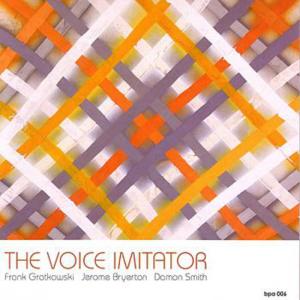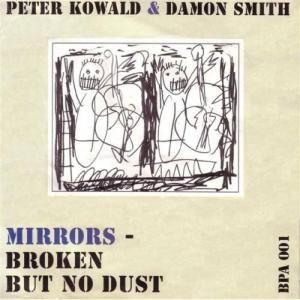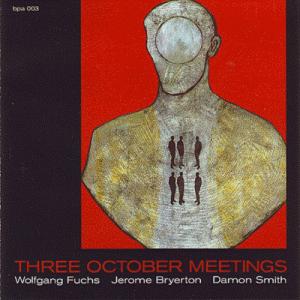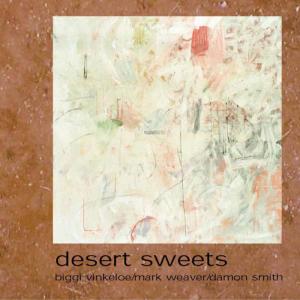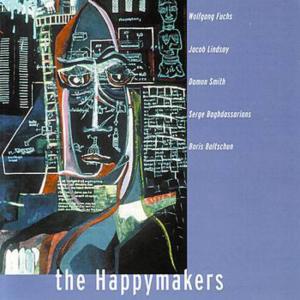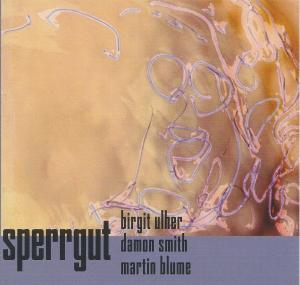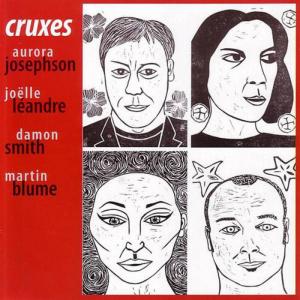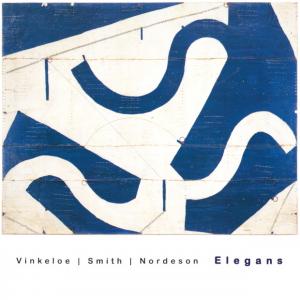|
Article before review added for your reading enjoyment.
UNAMERICAN ACTIVITIES
Compact Discs in review
The echoic whispers of ghosts, howls from hidden vanished places. (WhereDead Voices Gather - Nick Tosches). Jazz has a substantial documented history, providing quotable references in abundance, often repeating facts that are merely hearsay and often untrue. The six CDs under observation are not "jazz", are not American and are not referenced by that lineage. Four of the participants have been part of my own personal performance history.
Spoken language seems to be a pertinent factor in improvised music, the dialects and colloquialisms creating natural inherent sound and rhythmic structure. The rhythm of the American spoken language, for example, is a major element in the idea of swing. The music under review is influenced by the language systems of Europe and Britain.
Up Deaf Cat Lane, far enough away from even a country road, the chattering classes' endless urban noise is absent from my everyday life, replaced at worst by the occasional whine of a chain saw or the warning bark of a dog, presenting the opportunity of quietude often augmented by the melodious musical calls made by birds and insects, allowing me to relate to the sound of improvised music from another perspective, often appearing as an extension of this natural order.
Having always been a great lover of tunes, especially those of Thelonious Monk and Ornette Coleman, and half-a-century of fanatical devotion to jazz music, it is clear that European improvised music is not a natural extension of that art form, and it cannot be described utilising the same criterion; certainly past academic reasoning. To play improvised music demands a formidable technique, great attention to detail, and an outstanding imagination, as there is no standard support system to lean upon. Only the moment, a moment that is occurring for the audience and performers simultaneously. All hearing it for the first time. The experience is not the simple minded notion of pleasure, although that could be enough, but rather the stimulation of senses, an awakening to a music spontaneously conceived. The CDs under review are a duet and five trios, possibly perfect configurations, allowing an unrestrained familiarity to develop.
Trombonist/cellist G�nter Christmann appears on two of the recordings; in duet with vocalist(!) Phil Minton ("(for) friends and neighbo(u)rs" - concepts of doing cod 008/explico 12) and in trio with Serge Baghdassarians (guitar & electronics) and Boris Baltschun (sampler & electronics) (mal d'archive - concepts of doing cod007/explico 11). (http://www.concepts-of-doing.de)
The duet presents two highly experienced free improvisers at the top of their form � quite my favourite improvised music CD of recent times � illustrating the level of diversity and interaction it's possible to achieve; their dialogue never just casually conversational. Serious wide-ranging topics are clearly apparent. Christmann's arsenal of trombone techniques vocalize their own accord; pops, slurs, squeals and squeaks � a certain grumbling, gathering together with close listening purity. His cello a little more scrabble scratch. There are trade-mark Minton effects; the lunatic opera singer, and Mickey's friend Donald makes a brief appearance. They emerge occasionally sanctified, small chills creeping from darkly shadowed ominous corners, a certain casual danger, only to burst forth into uproarious laughter.
G�nter Christmann's musical journey began in 1968 and embodies a variety of disciplines which include a tenure with the legendary Globe Unity Orchestra. From the late seventies on he developed a series under the generic name VARIO working and touring with an international who's who of musicians; once even in Canada (1979). His fancy has seen him working with dancers, actors and acrobats, and in live performance with film; some of which he himself creates. He has also mastered the difficult art of solo trombone playing.
The second CD has a quite different feel, more minimalist in character with spikey, brittle and somewhat edgey results utilising the current language of electronically generated sound sources, the 15 short pieces (1:44 - 8:04) seemingly tightly contained, often creating an unsettling urgency, or in contrast carefully restrained and overly fastidious character refinements.
Drummer/percussionist Roger Turner, an accomplice of both Christmann and Minton, appears on two trio CDs, Konk Pack - Big Deep - GROB 102 (http://www.churchofgrob.com) with Tim Hodgkinson (flat guitar, electronics, clarinet & alto saxophone) and Thomas Lehn (analogue synthesizer), and PUT - Umlaut - NURNICHTNUR CD 1000425 (www.nurnichtnur.de) with Birgit Ulher (trumpet) and Ulrich Phillipp (double bass).
As with Minton, Turner and Hodgkinson come from a British history with the influential language of two 1950's shows; the Goon Show on radio and Bill and Ben the Flowerpot Men on television. Both revolutionary programs that utilised an incredible array of sound effects, much of which has found its way into everyday language. For example The Flowerpot Men's language, officially called Oddle Poddle, was notable for being almost completely incomprehensible: "Waddle oo tikoo dop? Gloob a waddle a hop" for example, translates as "What do you think of that? Gloves as well as a hat".
The inclusion of percussion, or indeed dissimilar combinations of instruments, immediately alters the music's personality, and with Konk Pack percussion appears as its centrepiece, with Turner's facile, fleet and focussed contribution giving the music an internal rapidity. Unlike many free improvisers his history begins with strong sixties jazz roots, a love of music performed by Ornette, Mingus, Coltrane et al, often giving this music an original element of "swing". As a trio they demonstrate a visceral integrated music, the end result a recognizable collective character. Over the course of the six pieces � each with a different personality � the dynamic/aural range and the vast array of electronic and rhythmic combinations allow us to experience the possibilities available. The longest piece (not head only in - 18:41) is a superb example of how interest is sustained in improvised music; moving about, developing from minimal flutter-click-clatter to a powerful surging "composition" � dare I say: "swinging like the clappers" � always creating an unhesitant linear story. In contrast there is the quietly abstracted; or elongated wave forms creating great drama, imagining other bodies, a mime perhaps. Bursts of energy from a landscape of tiny tinny squiggles, pushing jerkily forward. Occasionally a skittery clarinet, the odd jolly moment, but certainly not a joke. And not a music of high-tech electronics � even an old radio might do it. The finalé approaches roar with a most dramatic ending of abrupt silence. Quite my favourite band at the Victo 2000 gathering, and the first example of electronically integrated music to catch my fancy.
The final 2 CDs, the above listed Umlaut, and Three October Meetings - balance point acoustics 003 (www.balancepointacoustics.com) with Wolfgang Fuchs (contrabass & bass clarinets, and sopranino saxophone), Jerome Bryerton (percussion) and Damon Smith (double bass), could superficially imply that the inclusion of bass and drums would steer the results toward jazz, create a rhythm section. This of course is not the case, not the intention, for even with this configuration the music is collectively created.
Umlaut gives us a continuous series of mostly miniatures, a series of dramatic vignettes in the form of sound sculptures � textural, pointillist portraits � each containing a certain delicacy among its brusque phrasing. A tad secret with a Zen sensibility, relying on a listener's certain mood. I believe it was Gerry Mulligan who said of Monk's music � "it is the silences as much as the notes", and in this music, so far removed from American history, it is often the silences that guide its course.
The recording with Wolfgang Fuchs finds him in the company of two younger Americans born in the same year that he began performing in public. His journey is well documented, his founding and leading the King Übü Örchestrü in 1983 an important stage in the ongoing language of Improvisation. This music, although with American partners, is much in his customary style; buzzy, insistent and often densely forceful. The snakey, sliding, somewhat brittle sopranino, popping, squealing, manipulated with fleet of tongue technique; the lower clef clarinets burbling away. The three meetings, two live and one in a studio, vary from brief forays to more extended works, and have an inclination toward obliging.
Are these replications of life sound, of everyday experience? Does it matter if it's rural or urban? In the end it's written language describing sound, sounds for which other ears may hear other voices.
|
